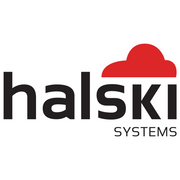How to Prepare for the End of Windows 7 Support

Launched in 2009, Windows 7 has remained a popular operating system for PC users for a decade. As technology has evolved, though, Microsoft® has decided it’s no longer viable to provide support to Windows 7 users. While the company has already started phasing out this operating system, it will completely stop expending resources on the product starting January 14, 2020. If you use Windows 7 for your home or business computers, it’s a good idea to start thinking about how to handle your IT support needs for this end-of-life date. To help you get prepared, here’s a look at the process and how you can migrate your system.
What Will Happen After January 14
The end-of-life date for Windows 7 on January 14, 2020, doesn't mean that it will stop operating. You will still be able to boot up and use your computer.
However, Microsoft will no longer offer technical support to users who experience problems with the product. They will also stop providing updates or patches that help keep the system current with modern tech. If you continue using the platform, you'll eventually experience problems—such as cybersecurity vulnerability—that could endanger your data or network as well as slow overall performance.
How to Prepare Your System
Backup Data
 Back up your files and programs to a cloud storage network or physical hard drive. If your hardware or software becomes compromised at any point, this data backup will be available to restore your system following the end of Windows 7 IT support.
Back up your files and programs to a cloud storage network or physical hard drive. If your hardware or software becomes compromised at any point, this data backup will be available to restore your system following the end of Windows 7 IT support.
Upgrade the Operating System
Upgrading to Windows 10 is the simplest option. This OS will function much like Windows 7 but offer greater compatibility and performance for modern resources. Since you’ll be staying on a Microsoft platform, you should have the option to transfer files and programs seamlessly and continue using your current devices.
You might also consider Linux, a free open-source operating system. While upgrading to this option will take some adjustment—or staff training for business PCs—there are several versions of Linux that can mimic the Windows experience as well as improve performance on older equipment.
Invest in New Hardware
Although Windows 10 may work on some older computers, those devices may not perform optimally. As such, if you purchased your computer around the same time you started Windows 7, it might be time to invest in equipment that meets or exceeds the Windows 10 minimum required specs.
Upgrading your business operating system, network, or computer equipment is a stress-free experience when you turn to the specialists at Halski Systems. Providing comprehensive IT support to commercial clients in the Gainesville, GA, area, this team will simplify all aspects of system updates—including data backups, network security changes, and cloud storage setup. Once resources are in place, this provider also offers in-depth managed services to provide quick and reliable solutions for security, data, and operational challenges. Learn more about these technology services online or call (866) 260-4457 to schedule a consultation with a friendly expert.
About the Business
Have a question? Ask the experts!
Send your question

